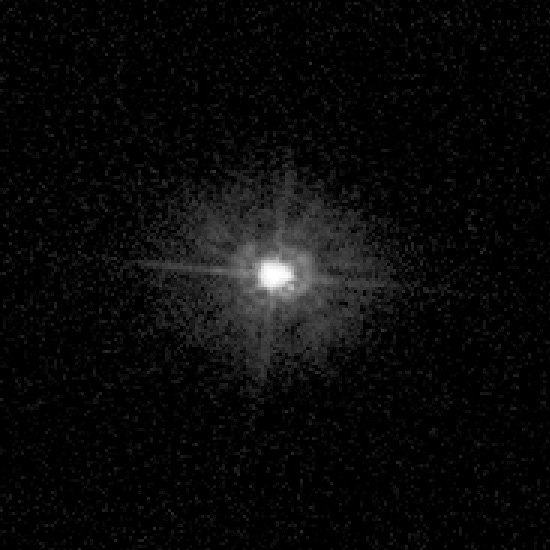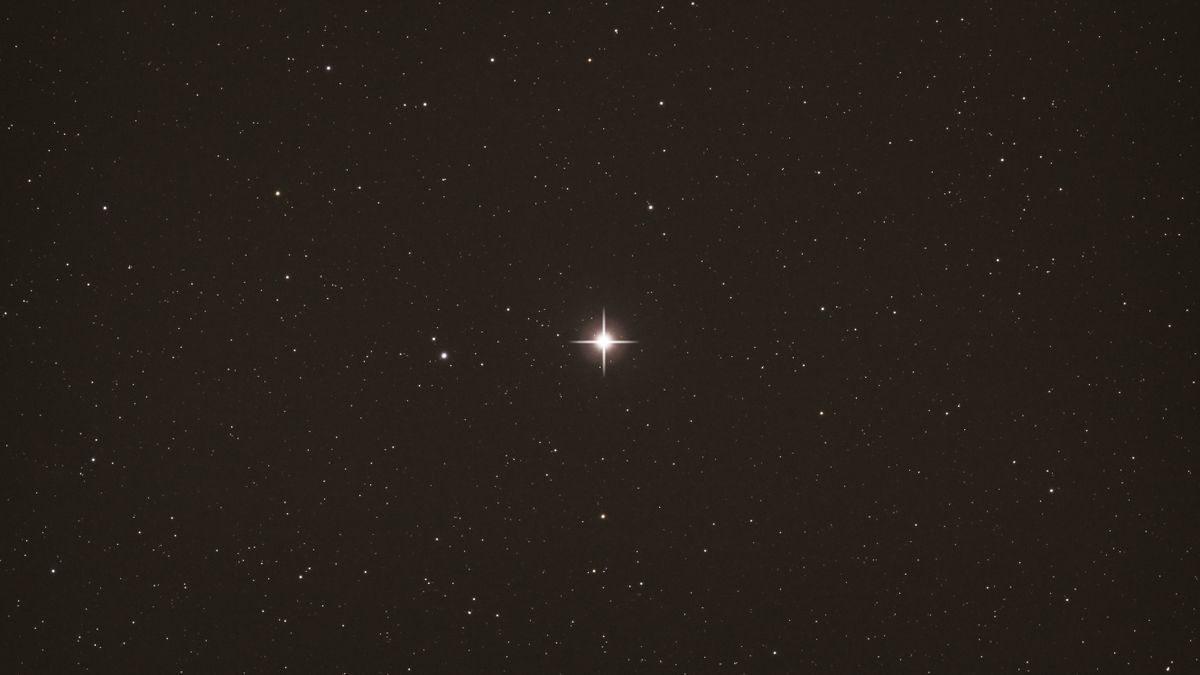In our solar system, scattered across one of Earth’s verdant mountains, six eggshell-white telescopes gaze into the deep universe. As one cohesive hive, the domed structures collect cosmic light to guide modern astronomers exploring space — and it is thanks to this hive that we now have a brilliant new perspective on the light that guided astronomers of the past: the North Star.
Our visual knowledge of the current North Star (because of Earth’s axial wobble, the title passes to different stars over the eons) runs deep. Artists, old and new, have depicted Polaris shining in their paintings, astrophotographers have imaged it from their backyards and scientists have pointed their instruments at it for decades. But what’s special about these new Polaris views, courtesy of the CHARA Array on Mount Wilson in California, has to do with resolution. The special thing about CHARA is, as touched on, its telescopes work in tandem with one another. Their light data is combined in a central facility to provide one whole, clear picture of a source. It’s as though the sextet of worker telescopes forms one ultimate telescope with a diameter of 330 meters (1,083 feet). And because of this, the project’s image resolution — specifically, angular resolution — is excellent.
Sure enough, after checking out some of these Polaris images, put together with CHARA observations taken between 2016 and 2021, scientists found some previously unknown features of the star. Most notably, there are discernable spots on the star’s surface, kind of like the sunspots we see on the sun every now and then.
“The CHARA images revealed large bright and dark spots on the surface of Polaris that changed over time,” Gail Schaefer, director of the CHARA Array, said in a statement.
One of the major reasons this finding came as a surprise has to do with the fact that Polaris isn’t any old star. It’s a sort of star known as a Cepheid variable, which means it brightens and dims periodically. Polaris in particular gets brighter and fainter according to a four-day cycle, and scientists love locating Cepheids due to such very predictable behavior. That’s because it allows these stars to be used for cosmic distance measurements. Basically, watching the change in a Cepheid’s brightness over one cycle can reveal its true brightness.
Related: A rare nova ignites a ‘new star’ in the sky this year. Here’s how to see it
By contrast, without predictably periodic pulsations, a star wouldn’t be very reliable for such measurements. At risk of simplification, a dim star, for instance, could be either far away or just small — or, it could be weirdly dim for some other reason. Or, it could just happen to be dim during the time at which it was observed.
Returning to those spots, as the CHARA team says, these high-resolution images of Polaris mark the first “glimpse of what the surface of a Cepheid variable looks like.” So, to find spots with that first glimpse was intriguing. But these spots weren’t the only result of the team’s analysis.
Unlike our lonely sun, Polaris doesn’t roam the universe by itself. Boasting about 46 times the size of our host star and lying over 400 light-years away from us, it’s part of a triple-star system. It just happens to be the brightest of its siblings. In fact, the original goal of CHARA’s Polaris investigation was to map the orbit of the star that circles our North Star once every 30 years. It’s the one that’s way closer than the other, making the endeavor a complex feat. Not only does this star float very close to Polaris, but the companion is also incredibly faint. It wasn’t even confirmed to exist until around 2005, owing its documentation to the Hubble Space Telescope.
“The small separation and large contrast in brightness between the two stars makes it extremely challenging to resolve the binary system during their closest approach,” team lead Nancy Evans at the Center for Astrophysics, Harvard & Smithsonian, who also helped with the companion’s identification, said in the statement. For that reason, the team dipped into some other astronomy tool boxes as well, such as a speckle interferometer at the Apache Point Observatory in New Mexico.

This mission was indeed a success, helping to confirm things like the size of Polaris and suggesting that the star may be about five times more massive than the sun — which is heavier than previously thought. That discovery is important in its own right because, as Evans told ScienceNews, only a few Cepheids have had their masses determined. It also poses some interesting questions to explore in the future. “The mass combined with the distance shows that the Cepheid is more luminous than predicted for this mass from evolutionary tracks,” the study authors write, for instance.
Still, the North Star’s spotty nature seems to have taken the limelight. Consider how the areas of the star on which spots are seen and the rate at which the star rotates appear to suggest a 120-day radial velocity variation — essentially referring to changes in the object’s velocity as seen along an observer’s line of sight. That poses yet another puzzle.
“We plan to continue imaging Polaris in the future,” John Monnier, an astronomy professor at the University of Michigan and co-author of the study, said in the statement. “We hope to better understand the mechanism that generates the spots on the surface of Polaris.”
The study was published on Aug. 20 in The Astrophysical Journal.

Dr. Thomas Hughes is a UK-based scientist and science communicator who makes complex topics accessible to readers. His articles explore breakthroughs in various scientific disciplines, from space exploration to cutting-edge research.








